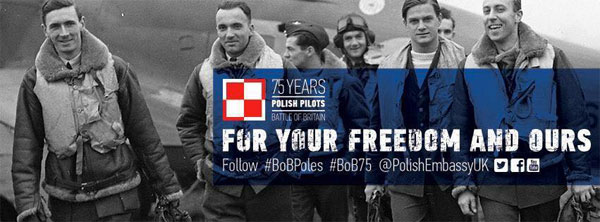On 8th November Bangor Historical Society welcomed Maciek Bator to give a talk on Polish airmen in Northern Ireland during the Second World War. His talk was entitled For your freedom and Ours, the title of a project he is currently working on. This involved sharing their history with various groups, including young people, in order to improve relations among the various peoples living in Northern Ireland. Particularly important was the East End residents group in Newtownards. A memorial to Polish airman was unveiled in Newtownards on 17 November 2018. They had been stationed at Ballyhalbert airfield.

The speaker began by outlining some relevant Polish history. 2018 is the hundredth anniversary of Polish independence. On 1 September 1939 the Germans invaded Poland from the west and then the Russians entered the country from the east. This partitioning of the country was a result of the Nazi-Soviet pact. The Polish air force was among those who resisted the invasions in vain. 170 German planes were shot down. Then the Polish airmen escaped first to Romania and then to France.
After the fall of France in 1940 the Polish government in exile, the airmen and other forces moved to the UK. The pilots, aircrew etc numbered 8,000, but they no equipment, planes or airfields. The airmen had to learn English and had training in the use of British equipment. By the end of August 1940 two Polish squadrons were operational. The UK welcomed their help as there was a shortage of trained pilots. 145 Polish pilots fought in the Battle of Britain. They destroyed over 203 aircraft at the cost of 29 men killed. The Polish forces included a woman pilot. They formed the largest non-British group. Two squadrons were based at Ballyhalbert: 303 and 315. There were over 100 Polish airmen in Northern Ireland during the war.
Mr Bator told the story of Wojek the soldier bear. This mascot came from Iraq. He was made a private in the Polish army in exile so that he got his own rations, rather than sharing the soldiersí. He helped carry ammunition during the fighting at Monte Cassino in Italy. Eventually he was put in Edinburgh Zoo, but he missed his freedom and the company of the soldiers. He died in 1960. There is a statue of him in Princess Street gardens in Edinburgh. At the end of the war Poland was incorporated in the Soviet bloc and many of the Polish airmen remained in the UK. Some 500 airmen joined the RAF. Some of those who did return to Poland were executed. Mr Bator stressed that the Polish pilots who came to the UK during the war were not refugees, but professional men who wanted to fight Polandís enemies. He mentioned the descendants of some Polish airmen who still live in Northern Ireland. Mr Batorís talk received an enthusiastic response and there were plenty of questions for him at the end.
